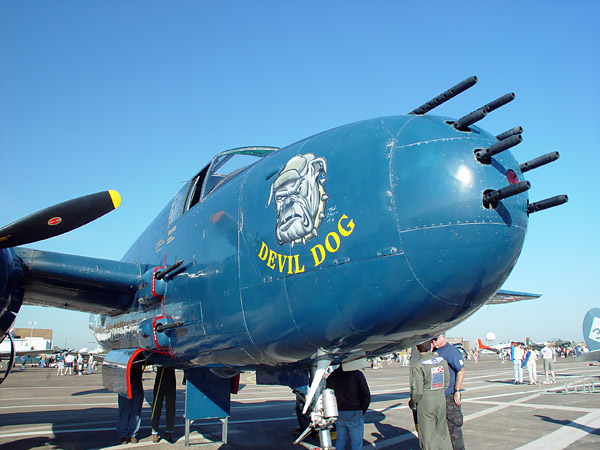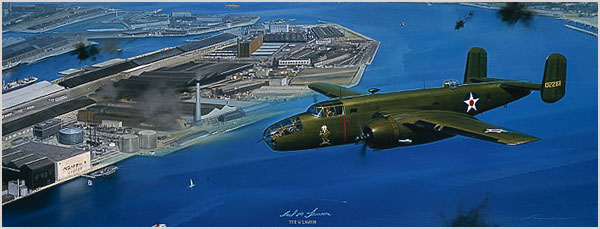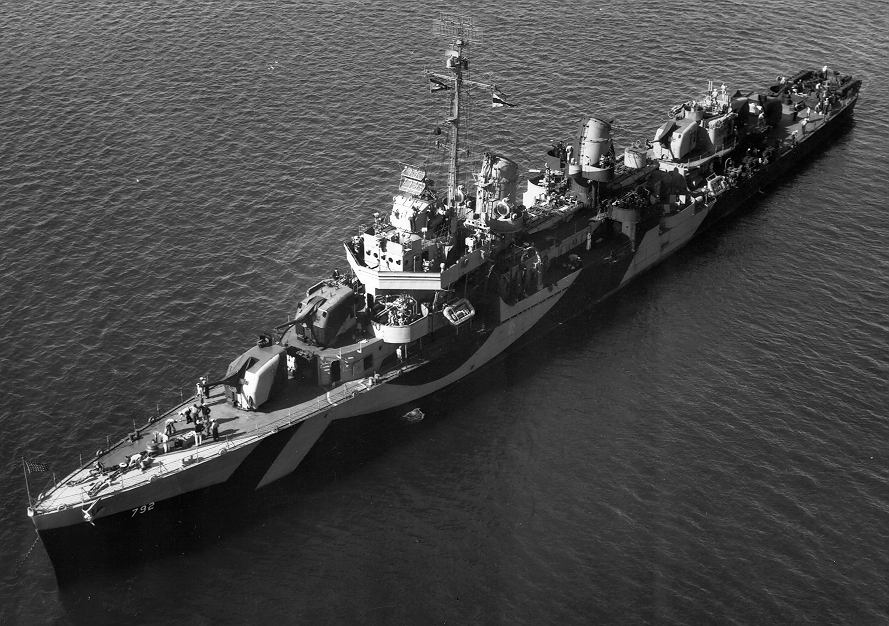|
Posted on 11/05/2003 12:00:35 AM PST by SAMWolf
|
|
 are acknowledged, affirmed and commemorated.
|

| Our Mission: The FReeper Foxhole is dedicated to Veterans of our Nation's military forces and to others who are affected in their relationships with Veterans.
Where the Freeper Foxhole introduces a different veteran each Wednesday. The "ordinary" Soldier, Sailor, Airman or Marine who participated in the events in our Country's history. We hope to present events as seen through their eyes. To give you a glimpse into the life of those who sacrificed for all of us - Our Veterans.
|
|
For 56 years I have been haunted by the memory of a human leg, torn off at the knee, sticking out of a soldier’s combat boot. The grisly limb was on a pile of bloody GI field jackets, trousers, helmet liners and boots at a French village in Normandy on January 17, 1945.  NATIONAL ARCHIVES. Although it was cold, many of the passengers on Troop Train 2980 dangled their legs outside the doors of their boxcars in order to get some fresh air and take stock of their new surroundings. This later led to some horrific injuries in the crash. By late December 1944, the initial success of Adolf Hitler’s Ardennes offensive spurred the Americans to ship all available reinforcements to the European Theater of Operations (ETO). Army units of all descriptions hastened to complete their training in the United States and were ordered to Europe instead of their original destinations in the Pacific. The first convoy to proceed directly to France from the United States cast off from New York on January 1, 1945. Among the ships carrying personnel and war material in that first convoy was Henry Gibbons. She had been built in 1943 as a troop transport, and New Year’s Day saw her loaded with armor, medical, engineer and quartermaster units. Sleeping arrangements belowdecks were cramped and uncomfortable, and meals were served only twice a day. Most soldiers, having trained together as a unit, stuck with their group during the voyage. Cards and gambling brought some of the men together, but the real social catalysts were the 40 nurses who were also on board. The nurses helped to forge friendships across unit lines and danced with the men to all the music played by impromptu bands formed during the voyage.  SS Henry Gibbons The largest outfit on board was the 782nd Tank Battalion. Sporting a reputation as the best-trained group of tankers in the Army, it was made up of 695 enlisted men and 42 officers. Next in size was my own unit, the 134th Evacuation Hospital, numbering 388: 40 nurses, 35 doctors, a warrant officer, 305 enlisted men and seven medical administrative officers-of which I was one. The 1471st Engineer Maintenance Company and the 565th Quartermaster Railhead Company followed us in size. Finally there was the 553rd Ambulance Company, consisting of 80 men and three officers. By the time Henry Gibbons came into Le Havre, France, on January 16, there was an atmosphere of friendly familiarity aboard. However, the discomfort of a lengthy voyage in stormy seas made the troops anxious to disembark and get on with their wartime responsibilities. My unit was called first. Once down the gangplank, we were loaded onto waiting trucks. We understood that being the first to get off and loaded onto trucks was special treatment due to the presence of the nurses in our ranks. Nevertheless, it was not an easy trip. We sat on hard wooden benches in the back of open trucks with only a canvas covering overhead as we rode through darkened villages in a freezing wind. We were en route to a newly activated staging camp named, as they all were, for a popular American cigarette brand.  We arrived at Camp Lucky Strike at 2 a.m. and were assigned to tents pitched on the frozen ground. Miserable and complaining, we bedded down as best we could. Our bedrolls were back with the rest of the troops, but we opened up the musette bags we carried, which contained extra socks and underwear, toilet kits, a blanket and half a canvas pup tent. We officers chivalrously gave our blankets to the nurses and wrapped ourselves in the thin shelter halves, which did little to help us through the cold night. Back in Le Havre, Henry Gibbons was relieved of the rest of her cargo of men and materiel. The troops came down the gangplank into a grim and silent port. Quietly, unit by unit, they trudged from the dock in biting cold to the railroad station through streets strewn with rubble of the war-damaged port city. It was 11 p.m. when Lieutenant Reed Morse of Company C, 782nd, marched his platoon away from Henry Gibbons. At the station they were loaded into “Forty and Eights,” French boxcars built to carry 40 men or eight horses. The forward 24 cars of the train were wood, with sliding side doors and single pairs of wheels at either end. Simple couplings linked the cars, which were fitted with rounded steel bumpers to absorb the force of stops. As uncomfortable as these unheated railroad cars were, they were welcome refuge from the wind and rain. Lieutenant Morse and 20 of his men climbed into one of the boxcars toward the front of the train. Other units from Henry Gibbons loaded in turn as they arrived at the station.  Trained in the repair and maintenance of heavy rolling stock, Lieutenant David Matteson and the members of the 1471st were not impressed by the French boxcars. The 1471st’s Sergeant Lowell Sell vividly remembered the events of that night: “The 4th Squad of the 2nd Maintenance Platoon was given an empty car, Number 13. Thinking we had plenty of room, this seemed lucky, so we spread out over the floor. Suddenly, the door slid open and two groups from the tank outfit filled our car. Fortunately, our squad decided to stay in a group. We moved in tight, sitting with our backs against the front of the car. Stafford was on my right, while Schonce was in the corner and on my left. Our 4th Squad and the tankers were jammed in tight. I remember a major in their group at the left side sliding door.” Meanwhile, the 553rd Ambulance Company climbed onto the train. The four officers and 170 men of the 656th Quartermaster Railhead Company were among the last to arrive. Activated in March 1944, they were well prepared for their mission to distribute rations to units operating on the front lines. Sergeant Horace Wesche recalled, “We boarded the train near midnight in cold rain turning to snow.” Arriving at the station after most of the other units, they were allotted the metal cars at the rear of the train. After what seemed like a wait of hours, around 2 a.m. the engine jerked the cars into motion and Troop Train 2980 began to roll. The men removed their steel helmets and used their field packs as back cushions. The cold, the train’s uneven motion and the hard floor guaranteed a sleepless ride.  They did not know that their impatience to get underway was matched by that of the officials who were responsible for the train’s schedule. The pressure was on. During January 1945, Le Havre had become the principal debarkation point in the ETO. Within a two-week period, the capacity of the port was almost doubled. Not far away, Camp Lucky Strike was designated the largest staging camp in Western Europe, with room for 66,000 military personnel. The plan was to move GIs by truck or rail from the port to the camp, where they were to remain about six weeks to assemble equipment and prepare for movement to the front. Hard-driving Maj. Gen. Frank S. Ross, the ETO’s chief of transportation, demanded that the troop trains move quickly. Any delay had to be explained in detail to transportation officials. Troop Train 2980 was no exception. To assure continuous operation along the train’s route, a second engineer and fireman rested behind the coal car in a passenger car equipped with a small stove and bunks. The train’s two French crews rotated duty under the direction of a U.S. Army transportation officer. An English locomotive powered number 2980, drawing 45 Forty and Eight boxcars -24 wooden cars with well-worn mechanical brakes and 21 steel cars in better mechanical shape. In the face of wartime demands, the British engine had been placed in service without a speedometer or speed-recorder.
|
Also, Sam thanks for the reminder about politicians in the military. Cover your butt . . .
|
Air Power |
The B-25 Mitchell, a twin-engine bomber that became standard equipment for the Allied Air Forces in World War II, was perhaps the most versatile aircraft of the war. It became the most heavily armed airplane in the world, was used for high-and low-level bombing, strafing, photoreconnaissance, submarine patrol and even as a fighter, and was distinguished as the aircraft that completed the historic raid over Tokyo in 1942.
It required 8,500 original drawings and 195,000 engineering man-hours to produce the first one, but nearly 10,000 were produced from late 1939, when the contract was awarded to North American Aviation, through 1945.
Basically, it was a twin-tail, mid-wing land monoplane powered by two 1,700-hp Wright Cyclone engines.
Normal bomb capacity was 5,000 pounds. Some versions carried 75 mm cannon, machine guns and added firepower of 13 .50-caliber guns in the conventional bombardier's compartment. One version carried eight .50-caliber guns in the nose in an arrangement that provided 14 forward-firing guns.
The B-25 was a very versatile medium bomber that was used on all fronts. An example of its versatility can be seen in its use by Jimmy Doolittle, who led a raiding group of B-25s off of the deck of the carrier Hornet to bomb the Japanese home islands in April 1942. Armament continually changed during the evolution of the B-25, from the B model with a glass nose and a single fifty caliber machine gun, to the G model that carried a 75mm cannon in the nose, to the later version of the J model that had a solid nose with eight .50 calibers, fuselage blisters with four more forward-firing .50s, and six more .50s in other fuselage positions. The USAAF was not the only service to use the B-25. Over 700 Mitchells were delivered to the U.S. Navy and Marines, under the designation PBJ. Many Allied nations also used the B-25, some continuing in use until the 1960's.
Specifications:
Manufacture: North American Aviation
Primary Role: Medium Bomber
Engines: Two 1,700-hp Wright R-2600-92 Cyclone radial piston engines
Crew: 5
Number Built: 9,889
Number Still Airworthy: ~34
Dimensions:
Weight: Empty 19,480 lbs., Max Takeoff 35,000 lbs.
Wing Span: 67ft. 7in.
Length: 52ft. 11in.
Height: 16ft. 4in.
Performance :
Maximum Speed at 13,000 ft: 272mph
Ceiling: 24,200 ft.
Range: 1,350 miles
Armaments:
12 12.7-mm (0.5-inch) machine guns
4,000 pounds of bombs









Phil is a "must read" of the Foxhole family. He's brilliant and his wit is wonderful.
He generally post after my bedtime so he is the first post that I read after posting the morning ping list and checking for mail from SAM. Then I read SAM's thread for the day and answer other pings.
A prior day's thread isn't finished until Phil has posted. He is a tradition around here and we are so thankful to have him.
You really shouldn't miss his posts. Our readers need to go to the prior day EOT (end of thread) to catch him but I would never want to miss one!
Sorry to brag about you in public Phil but it's all true. Besides, SAM isn't immune from me bragging about him and neither are you.
My exact thoughts as I was reading the USS Pueblo thread . . . gee, all I need now is a 36hr. day and I'll be able to keep up with you guys.
BTW, does Sam know that he comes after Phil? ;o)
Oh, there you go causing trouble. LOL.
Sure, but I know Phil's worth it. I'm usually lucky enough to cath his post just before the next day's thread so I get to read it before Snippy. Neener Neener!
So, I kind of like saving it til morning. It's a good thing to wake up to, so there. Neener, neener. ;)
Let's see . . . cath . . . OH!!! I get it . . . that's a military term for placing a catheter or inserting oneself into something. Roger that Sam!
He is so quick and his mind is much faster than his fingers that they just can't keep up.
He certainly is!
I learn not only from SAM and Phil but just about every Foxhole poster has taught me something, including you tanker!
It truly is where the Foxhole gets it's life blood, from it's readers who may only appear behind the scenes in freepmail to our up front family of posters and contributors.
We'd be nothing without all y'all. :)
Can I use that excuse too? I like it better than my computer virus theory. :^)
G'Afternoon all~
With the recent painfull loss of the servicemen in Iraq..and the Helo incident near Falujiah..found a paralell story from WW-2..were servicemen were moments from going Home...but it would not be so for some.
USS Callaghan DD 792
USS Callaghan was launched on August 1st. 1943. The Callaghan Sailed from the West coast, February 5th. 1944. She was assigned to Fifth Fleet, The mission of the ship, [DD's with new and refreshed powerplants were often assigned to fast carrier battlegroups]...was to screen Aircraft Carrier strikes on Pala, Ulithi, and Woleai.
The Loss of USS Callaghan
During the last fortnight of July,1945 destroyer Callaghan..Flagship 0f Captian A.E. Jarrell,ComDesRon 55,was on radar picket station off Okinawa.
With her on station were Destroyers Prichett, Cassin Young and 3 LCS's.
Callaghan had seen her share of the Pacific war.
More than her share.The barrels of her guns were worn from hours of incessant firing.Her director system needed overhaul;her topside was weather-beaten;her engines tired.
For *18 months ship and crew had been on the go,climaxing this tour of duty on the Radar Picket line off Okinawa.
Now she was due to go home..overhaul for the ship...R&R for her crew.
As the midwatch came on and the ships log entered July 29th,...the crew could hardly bear the anticipation.
Destroyer USS Laws was enroute to relieve DD792..this would be her last hour on station. At 0030 plot reported a "Bogey" which appeared to be snooping in the dark.
Crew rushed to GQ..moments later DD 792'S 5 inchers began to errupt ..smearing the night sky in brilliant flashes.
The plane turned on a Kamikaze course..heading straight for Callaghan.
At 0041 the plane suicided into the ship near the #3 upper munitions handling room.
A thunderclap rocked the destroyer..minutes later the munitions handling room let go.
Callaghans superstructure went up violently hundreds of feet into the night sky.
The ship listed to starboard,as flames engulfed the topside wreckage..the sea flooding into her comparments.
At 0050 all hands were ordered to abandon ship as "Pall bearers" closed to pick up survivors and bring aid to the 71 wounded Blue Jackets and 2 officers. At 0143,the salvage party abandoned the firey hulk....Callagahan slid under the waves shortly..taking 46 Blue Jackets and an officer with her in a most unlucky sinking.
USS Callaghan had 12 Japanese planes painted on her director;the kamikaze that killed her would have been the 13th.
DD 792 was the 13th...and last Destroyer to go down off Okinawa.
Disclaimer: Opinions posted on Free Republic are those of the individual posters and do not necessarily represent the opinion of Free Republic or its management. All materials posted herein are protected by copyright law and the exemption for fair use of copyrighted works.